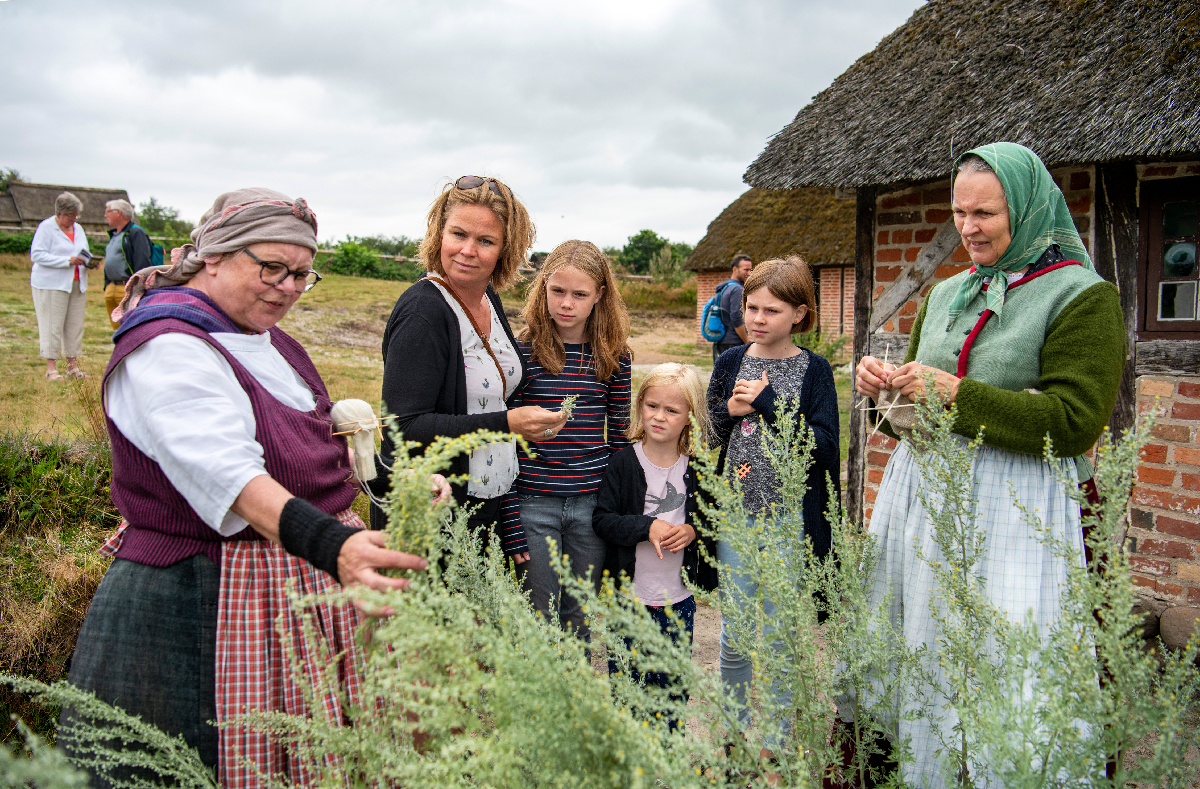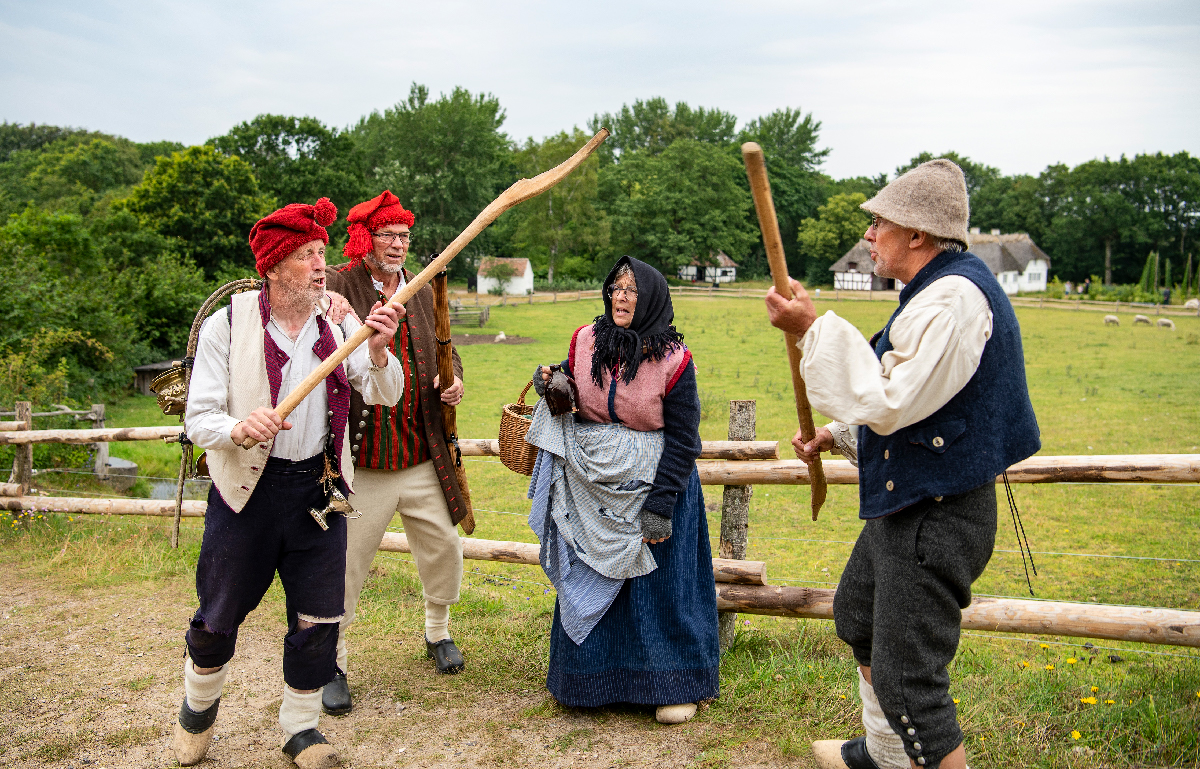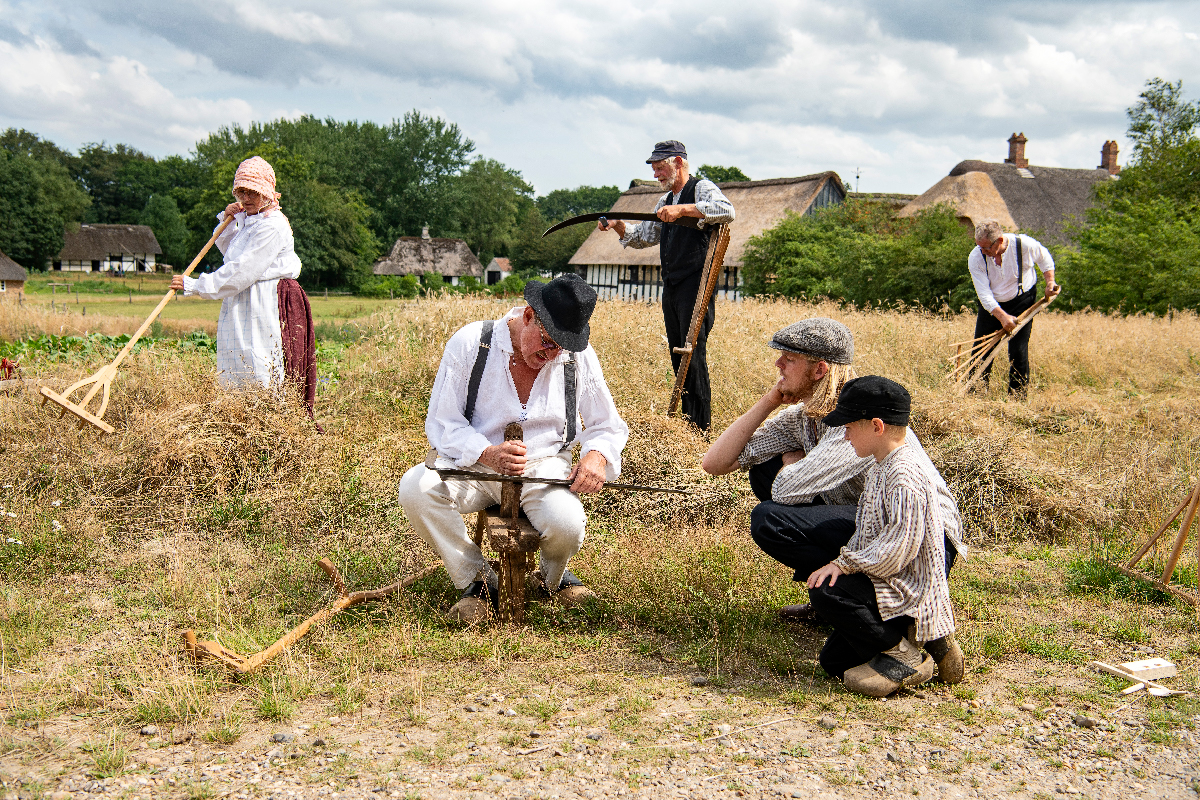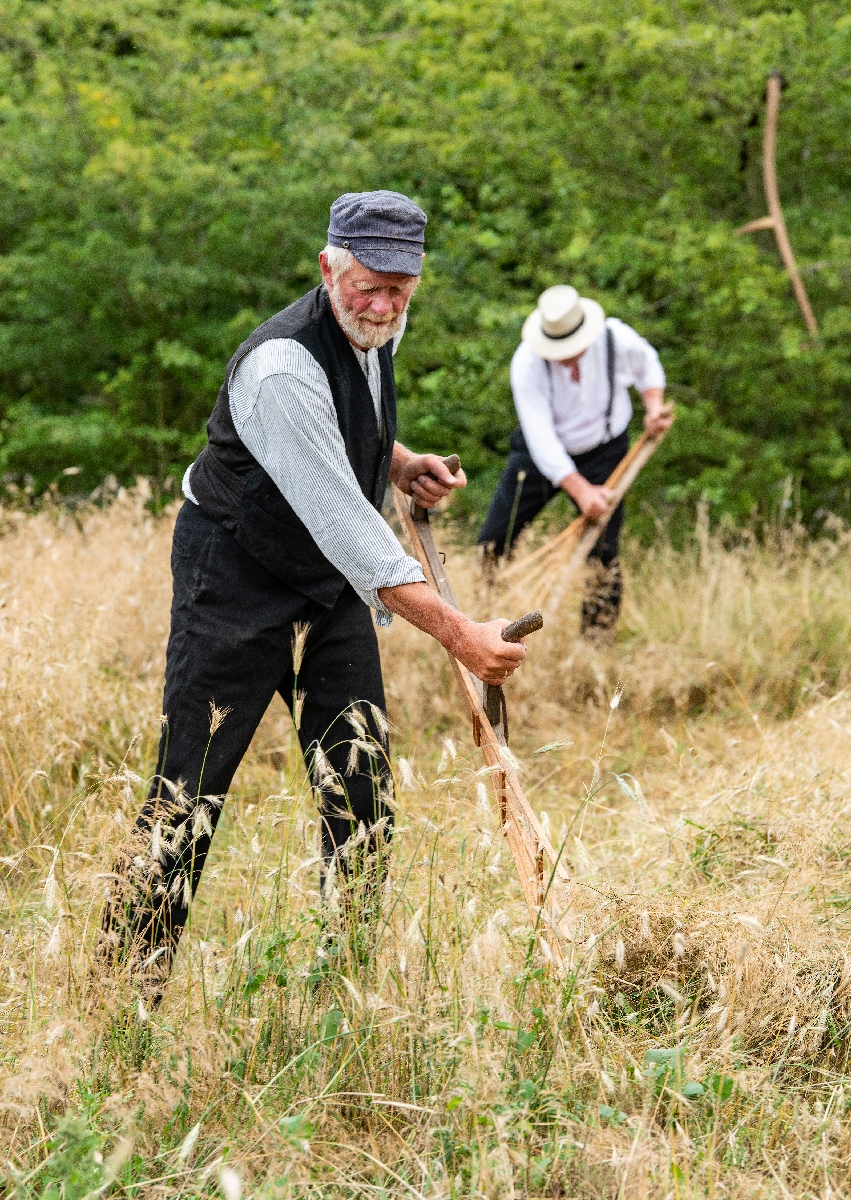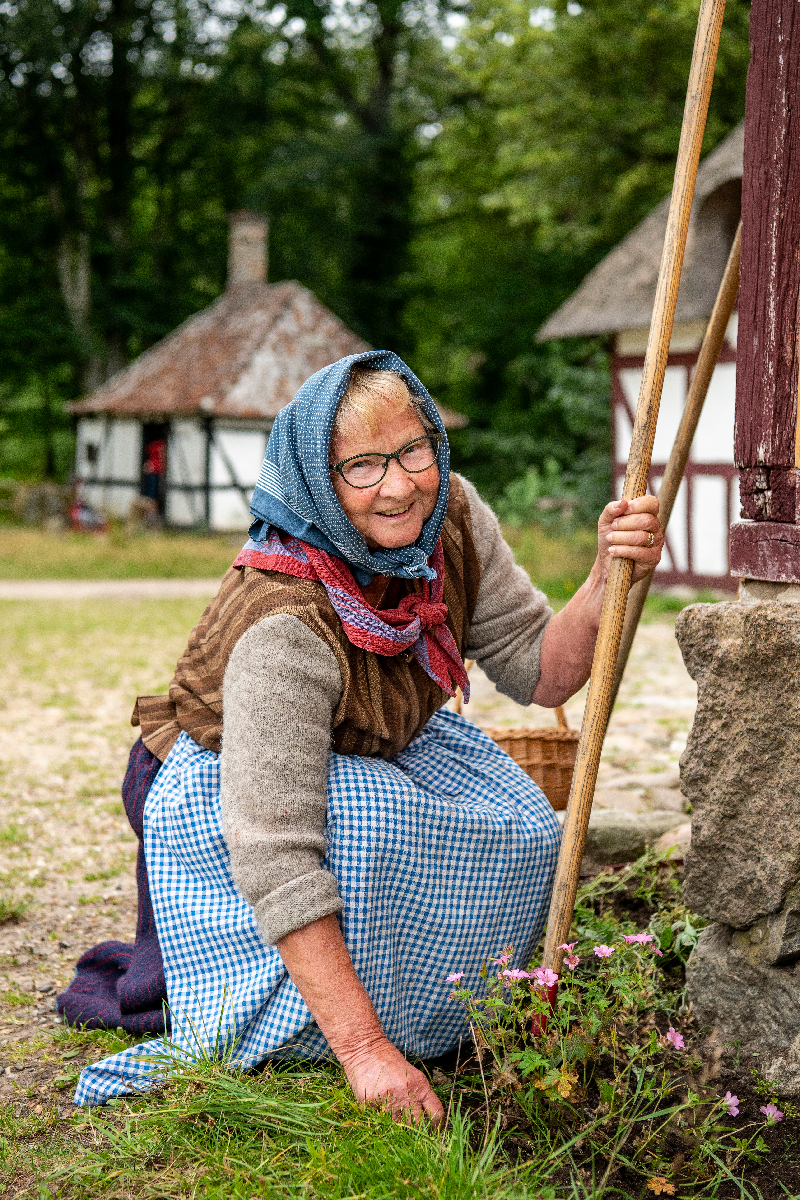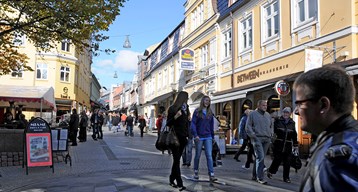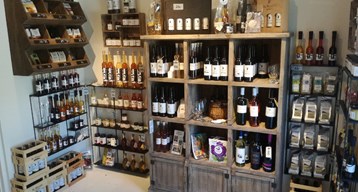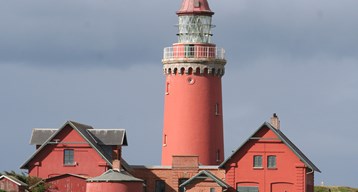The many good experiences, topped off with real history
Hjerl Hede is something for everyone in the family and is full of good, funny and thoughtful stories, as well as experiences. The old buildings, the free-range chickens and geese and not at least the volunteers in historical clothes, help to set the right mood, from the moment you enter the museum. Then the authentic experience only gets bigger as you move into the historic buildings, taste the baker's delicious bread and cakes, let the children play on the historic playground, sit on the school bench from 1826, buy candy at the grocery store, play rope maker apprentice, take a trip with the steam train, which has a carriage connected, that was part of the recordings for "Olsen gang in Jutland", a famous Danish movie. And on top of a wealth of experiences, all of which are framed by some of Central Jutland's most beautiful nature, it may be necessary to rest at the museum's restaurant - Skyttegården, which is located in the middle of the entire authentic experience.
Yes, many senses come into use, on a visit to Hjerl Hede. Here the whole family can easily spend the whole day exploring the old houses, as well as the surrounding beautiful nature.
